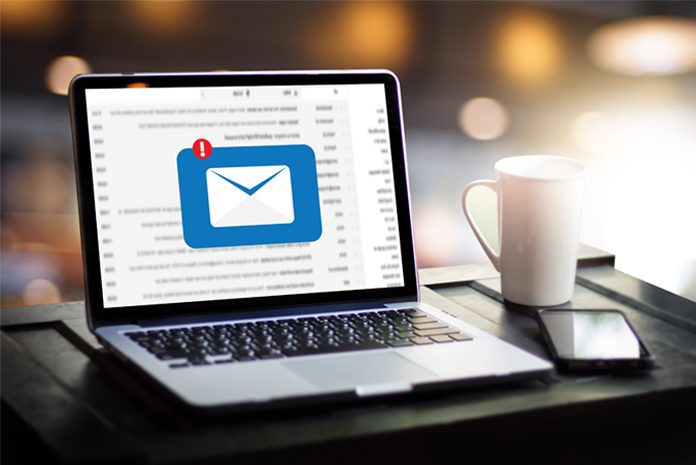A contact list where every subscriber is an engaged reader and an active buyer is something email marketers can only dream about. Let’s face the truth; your email list will always include both active and passive subscribers.
At the very beginning, when visitors opt in to receive your emails, they are usually really interested in what you have to offer. New subscribers read your emails, click your links and make purchases, but as time goes by they become less and less likely to open your messages.
Keeping your customers engaged in the ever-changing, always competitive marketing world is a tough challenge. Eventually, some of the email recipients will no longer engage with your regular content.
Sending emails to these inactive subscribers not only costs you money, but it can also harm your overall email deliverability. Email campaigns with low open rates can be flagged as spam and may result in you losing your sender reputation.
That’s where you’re left with two options: either try to activate these subscribers or delete them from your email list. And if there’s even a tiny chance to rekindle the subscribers’ interest in your messages, you’d better not miss it.
That’s why it’s best that you identify the subscribers who’ve lost interest in your emails and include them in your win-back campaigns as early as possible. The subscribers who you’ll manage to reactivate may even become the most loyal brand advocates in the long run.
Here are the main steps to creating a well-planned re-engagement campaign, one that takes into account the nature of your business, runs automatically and drives results.
1. Identify Your Inactive Subscribers
There are two common ways to identify an inactive subscriber: by the number of subsequent emails ignored recently or by the time since the last email open. For example, you can launch your re-engagement campaign for those who haven’t opened the latest 7 emails or haven’t opened any emails for the last 3-6 months. The actual numbers vary for different types of businesses. You’ll have to figure out what applies to yours.
2. Consider Your Current Sending Frequency
Your subscribers may prefer to receive emails from you on a daily, weekly, or monthly basis. Some of them may want to receive all types of emails, while others care only about your special offers. In your emails, provide your customers with a link to an email preference center — a webpage where they can choose their desirable email frequency and topics. If your subscribers stop reading your emails, you’ll know it’s not because you’re over-emailing them. And knowing each subscriber’s expectations about email frequency, you’ll be able to start your win-back campaigns at the right moment. If your subscribers choose to receive your emails daily, it might be a good idea to send a win-back email after a week since their last open. However, if someone chooses to receive emails weekly, they would take it as yet another regular email.
3. Find Out Why Your Subscribers Lose Interest in Your Emails
Email Monks list the 4 main reasons why subscribers disengage from emails: over-emailing, subject lines showing no value, boring and unresponsive design, repetitive or irrelevant content. Analyze your subject lines, email design and content to make sure you’re sending emails you’d like to receive yourself.
4. Segment Your Inactive Subscribers Considering Previous Interactions
Keep in mind that your subscribers can stop reading your emails at any stage of their customer journey. Make sure to keep track of your subscribers’ actions, such as website visits, purchases and email opens. As you collect data, use it to segment your inactive subscribers’ list into groups by their previous activity, such as: those who’ve never read your emails and never purchased, those who used to read emails but never purchased, those who used to read emails and used to purchase, and so on. This will let you sort out your priorities and target your re-engagement efforts at the most valuable subscribers.
5. Grab Your Subscribers’ Attention and Prove the Value of Your Emails
Spare no effort in making the content of your win-back emails as catchy, emotional and useful as possible. Try to answer the three main questions your subscribers may ask, “Why do I want to get emails from this brand?” “What do I lose by ignoring these emails?” and “How do I benefit if I continue receiving them?”
6. Try Different Ideas for Customer Re-engagement
Remember that you are not bound to send the cliché ‘we miss you’ message. In your re-engagement emails, you can ask for feedback, update your subscribers on new products and features, offer gifts or discounts, and so on. Try to figure out what kind of message and offer would be the best fit for each particular group of your inactive customers. Instead, it’s best that you send emails that don’t make your re-engagement efforts obvious to the recipients.
7. Test Your Re-engagement Emails
Split-test different ideas for your re-engagement campaigns to find out what works best. Although testing takes time and effort, it will help you refine your email design, improve your copy and tailor your offers. If your email list is large enough, consider creating test groups with a couple of hundreds or thousands of randomly selected emails in each — this way, you’ll get more accurate and trustworthy test results. Test one thing at a time, starting with the subject line. And after you find the subject line that drives maximum opens, proceed with testing different elements of your email content.
8. Decide What to Do with the Subscribers That Remain Inactive
Even a super effective re-engagement campaign won’t give a 100% result. It’s inevitable that some subscribers won’t take any action after receiving your win-back emails. As the last step in your re-engagement campaign, send a breakup email. In the email, give the disengaged subscribers the last option to confirm that they want to continue receiving emails from you. If the subscribers don’t react, stop emailing them. This will help you reduce your email marketing costs and improve the KPIs for your regular campaigns.
9. Avoid Sending One-offs to All Your Inactive Customers
Sending large amounts of re-engagement emails at once is risky. Remember that inactive subscribers are the most troublesome and risky part of your list. A large one-off campaign targeted to all your inactive subscribers may result in a large number of unsubscribes, complaints or errors. This may harm your sender reputation and the deliverability of your future emails.
10. Automate Your Re-engagement Email Campaigns
It’s difficult to follow the above recommendations if you manage your re-engagement email campaigns manually. The introduction of email automation can make it simple for you to launch and stop your win-back campaigns at the right moment, send triggered re-engagement emails instead of one-offs, and avoid sending the same re-engagement campaign to one subscriber twice.
Bottom Line
Subscriber inactivity is something every business faces sooner or later, but that’s life. It’s how you cope with the challenge that makes all the difference.
Remember there’s no magic formula that fits everyone all the time. Consider your inactive subscribers as an opportunity to work through new ideas and adjust your re-engagement strategy. Be patient and realistic, and your reactivation efforts will pay off many times over. In this way, you’ll be able to bring back your old customers and get new sales.
Find a Home-Based Business to Start-Up >>> Hundreds of Business Listings.

















































